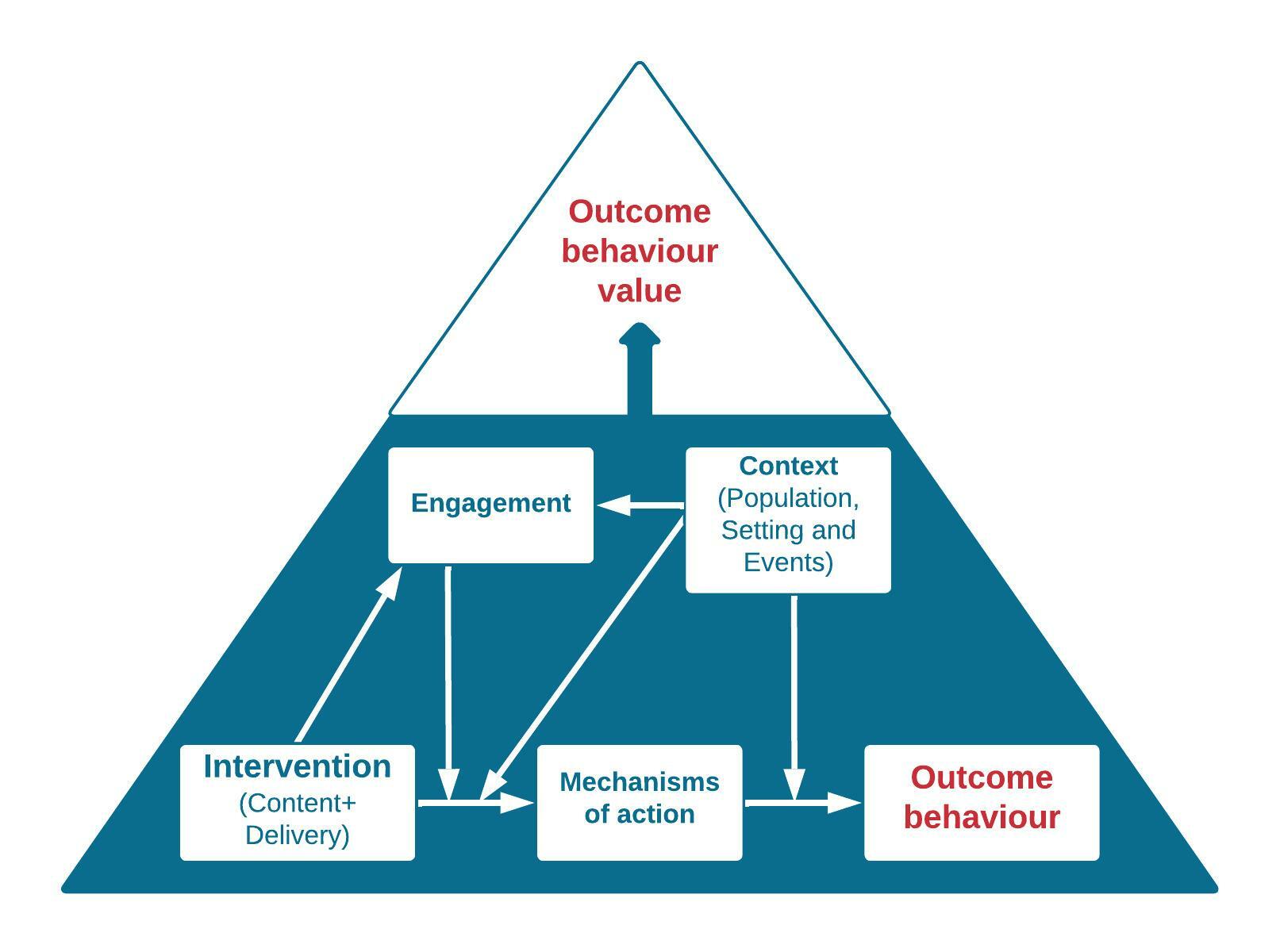Behavioural Science
What?
The behavioural science team is developing an ontology specific to behaviour change interventions – the Behaviour Change Intervention Ontology (BCIO). The BCIO is a set of definitions for entities and relationships used to describe behaviour change interventions, their contexts, effects and evaluations. It is being used to structure the evidence in intervention evaluation reports and provides a structured framework to underpin the training of the system. Computer scientists use the resulting data structure to create algorithms which can gather and synthesise relevant information from research reports more rapidly than current methods for systematic reviewing allow.
How?
The BCIO structures knowledge about the intervention and its evaluation. Developing the ontology involves a combination of reviewing, refining and extending existing relevant ontologies and taxonomies (such as the Behaviour Change Techniques Taxonomy (BCTTv1)), consultation with ontology experts, and peer review from, and discussions with, international behaviour change experts.
Central to the ontology development process is the annotation of behaviour change intervention evaluation reports according to the developing BCIO. Pairs of researchers annotate papers using specialist systematic review software (EPPI Reviewer). Annotated data are checked for discrepancies between annotators to reveal ambiguities, omissions and problems with definitions. Terms are added or modified and definitions iteratively refined until a well-functioning set is achieved. The project’s ontology expert is consulted at strategic time-points.
The Upper Level of the BCIO
A visual representation of the upper level of the BCIO intervention entities is shown below. Each section of the triangle represents an upper-level ontology entity, organised to demonstrate the relationships between them.

About the Diagram
The entities of the intervention scenario part of the BCIO are listed below, with illustrative examples:
- Intervention – Opportunistic brief advice on smoking cessation (content) by a doctor, lasting an average of 30 seconds (delivery)
- Context – Adult smokers (population) attending a routine primary care appointment for a health problem in the UK (setting)
- Target behaviour – Cessation of cigarette smoking for at least six months
- Mechanisms – Increase in desire to stop smoking and confidence in quitting leading to a quit attempt
- Exposure – 80% of smokers attending for an appointment receive the advice
- Outcome – 7% of the participants stopped smoking for at least six months
The entities interact as shown by the arrows in the diagram. The content and delivery of an intervention influence the target behaviour through one or more mechanisms of action. The context moderates the influence of 1) the intervention on the mechanisms of action and 2) the mechanisms of action on the behaviour. Exposure moderates the influence of the intervention on the mechanisms of action and is itself influenced by the intervention and context.
Human Behaviour-Change Project
Centre for Behaviour Change
University College London
1-19 Torrington Place, London, WC1E 7HB
